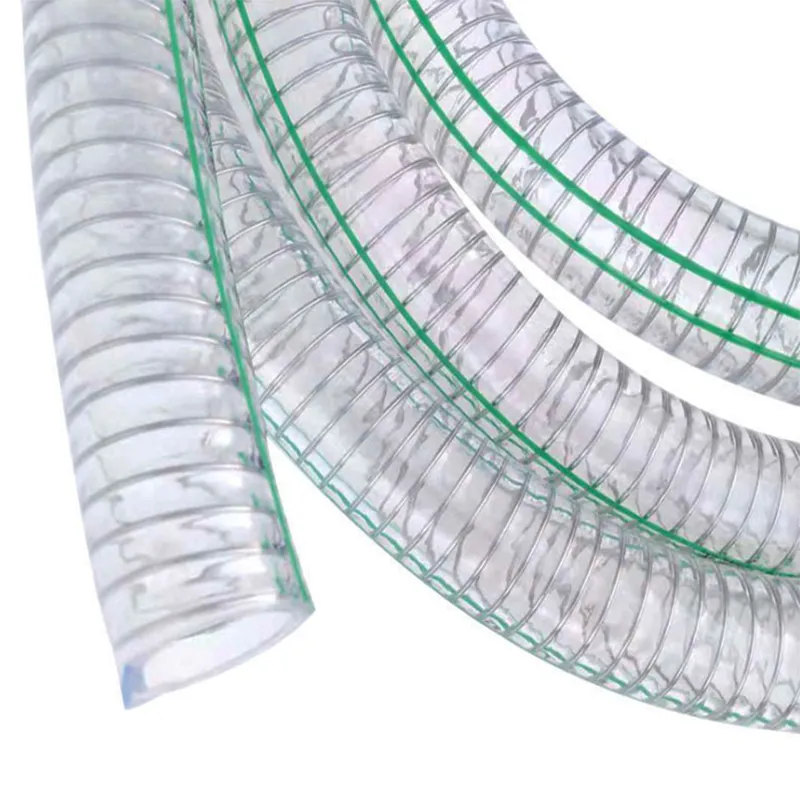layflat hose sizes
Understanding Layflat Hose Sizes A Comprehensive Guide
Layflat hoses are an essential tool in various industries, particularly in agriculture, construction, and mining. Their ability to transport water and other fluids efficiently makes them a preferred choice for irrigation, dewatering, and even fire-fighting applications. However, choosing the right layflat hose size is crucial for optimizing performance, ensuring durability, and achieving effective fluid transfer.
What is Layflat Hose?
A layflat hose is designed to lay flat when not in use, which simplifies storage and transportation. Unlike rigid piping systems, layflat hoses are flexible, making them easy to handle and deploy in various applications. They typically consist of a durable synthetic material that can withstand pressure and abrasion.
Why Size Matters
Choosing the correct layflat hose size is vital for several reasons
1. Flow Rate The size of the hose directly affects the flow rate of the fluid being transported. A larger diameter allows for a higher flow rate, which may be necessary for specific applications, such as in agricultural irrigation systems where large volumes of water must be moved quickly.
2. Pressure Compatibility Different sizes of layflat hoses are designed to handle varying levels of pressure. It's essential to select a hose that can withstand the operational pressure of your system. Using a hose that is too small may result in excessive pressure buildup, leading to hose failure.
3. Compatibility with Fittings and Accessories When selecting a layflat hose, the size must match the fittings and connectors used in your system. This ensures a secure, leak-free connection and prevents potential operational issues.
layflat hose sizes

Common Sizes of Layflat Hoses
Layflat hoses come in a variety of sizes, generally ranging from 1 inch to 12 inches in diameter. The most commonly used sizes include
- 1 to 2 Inches Ideal for smaller applications, such as garden irrigation or pooling water in tight spaces. - 3 to 6 Inches Frequently used in construction sites for dewatering efforts and in agricultural tasks for moderate flow rates. These sizes strike a balance between maneuverability and volume. - 8 to 12 Inches Typically reserved for large-scale operations that require high flow rates, such as in firefighting or heavy-duty industrial applications.
Determining the Right Size
To determine the appropriate size for your layflat hose system, consider
- Application Requirements Assess the fluid type, flow rate, and pressure needed for your specific operation. - Distance to be Covered Longer runs may require larger hoses to maintain efficient flow rates. - Storage Space Remember that larger hoses require more storage space and can be heavier, affecting transport and deployment.
Conclusion
In summary, selecting the right layflat hose size is a critical factor in ensuring the efficiency and effectiveness of fluid transfer applications. By understanding the various sizes available and their respective applications, you can make an informed decision that aligns with your operational needs. Whether you're working on an agricultural field or a construction site, the right layflat hose can make all the difference in your fluid management strategy.
-
Upgrade Your Water Management with Premium PVC Water Hoses by Leading ManufacturersNewsMar.12,2025
-
Understanding PU Pneumatic Hose: A Comprehensive GuideNewsMar.12,2025
-
Transform Your Gardening Experience with Premium PVC Garden HosesNewsMar.12,2025
-
The Ultimate Guide to Polyurethane TubingNewsMar.12,2025
-
The Essential Guide to Lpg Hose: Safety, Quality, And ValueNewsMar.12,2025
-
Discover the Benefits of PVC Air HosesNewsMar.12,2025














